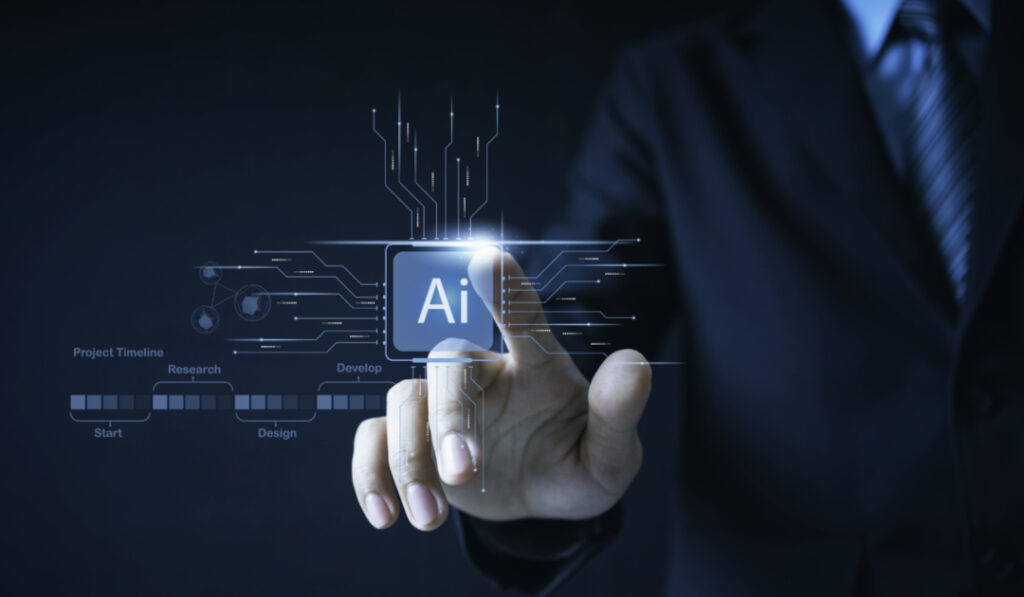Does AI excite or scare you? If you are like me, the answer is both. Artificial Intelligence is coming. It is not if, but when. It is already happening in our daily use. Do you use Siri? Do you self-scan at checkouts? Are you interested in driving an autonomous car (I rode in one in France!)? It is being applied to our personal life in many ways. Its professional use is escalating as fast or faster. AI is changing not only how we do things but what we can accomplish and how fast it can get done.
Today, I attended a meeting of ACG (Association for Corporate Growth) and NACD (National Association of Corporate Directors), where two experts on the topic were presenting. Bill Briggs, Chief Technology Officer at Deloitte, led with this statement, “The lightbulb was not created by improving the candle.” AI is disruptive technology. It carries the opportunity to leapfrog to levels of performance that previously haven’t been contemplated, and yet, like most things, it carries risks to be managed. The other speaker, Paul Bommarito, VP Americas Enterprise Sales at NVIDIA, the company with the largest AI platform in the world and $1 Trillion capitalization, said the two drivers of AI are economics, or the ability to save money by doing things efficiently, and innovation, creating opportunities to do things significantly better or develop things–products and capabilities–that never existed before.
What are some of the applications?
- Retail: One of their largest issues is shrinkage and AI has been applied to enabling self-scanning checkout systems to catch scanning errors as well as attempts to use UPC codes of lower priced items to acquire higher priced items. The old switcheroo done technologically. The algorithms in place are preventing that with 99% accuracy.
- Manufacturing: While many of us are aware of the use of robots on the assembly line or in material goods transfers from station to station, cameras can be installed to observe the production line and provide quality control.
- Product Development: By feeding data from all kinds of sources—from product sales to twitter to research—AI systems can perform aggregated data analysis, produce product concepts, and provide the bill of materials so costs can be calculated. They can even come up with the marketing campaign for targeted users!
- Financial Services: One popular application is Contract Review.
One of the applications I strongly encourage my clients to start with is predicative sales modeling. Creating algorithms based on multi-source data to provide insights on what would best suit each current or prospective customer and customize the entire selling process. This can and is being done today. Companies can build their own systems to start. Some are doing it manually using algorithms which are, essentially, educated assumptions. It won’t be long before this type of tool becomes common place, perhaps offered by a new start up or an extension of a firm like Salesforce.
Companies willing to embrace AI now will be able to race to the top over competitors who hang back. While the first question most companies ask is “What is the ROI?”, the challenge is what happens if your organization doesn’t engage? It can fall further behind and eventually be replaced with new business models that are founded on the utilization of AI and changing the game in the industry. In other words, your company risks becoming less relevant. Think about how long it took for Netflix to outdate Blockbuster, or Uber to outshine taxis. The life cycle of businesses that don’t adapt to AI will be remarkably shorter. The experts advise that the first step is for executive leadership and boards to develop a strategy that defines the ways in which AI can be best applied, and identify with surgical precision where to start, creating guardrails for proper application.
Bommarito offered that there are four key steps to a successful adaptation of AI projects:
- It must be budgeted.
- It has executive sponsorship.
- The infrastructure is in place to support it. Aged ERP or other critical systems may need to be updated.
- It requires the right talent. This may be the hardest of all as this skill set has limited supply.
While many want to further study, stand back and watch, or defer the tough decisions that go with moving into AI, it is unlikely to be effective. Briggs explicitly stated this is not a time for a committee or endless “what ifs”. Nothing comes without risk of some kind, but they are “identifiable and codifiable” and therefore can be navigated with guardrail policies to produce the best possible outcome. He called for Oppenheimer leaders who can bridge science with operations and get the best of both. Some say that is one of Elon Musk’s greatest strengths.
The presence of AI in our homes, and our businesses, is non-negotiable. But having the ability to set the terms for it through strategy development and effective prioritization of its contribution, is. Start now.

